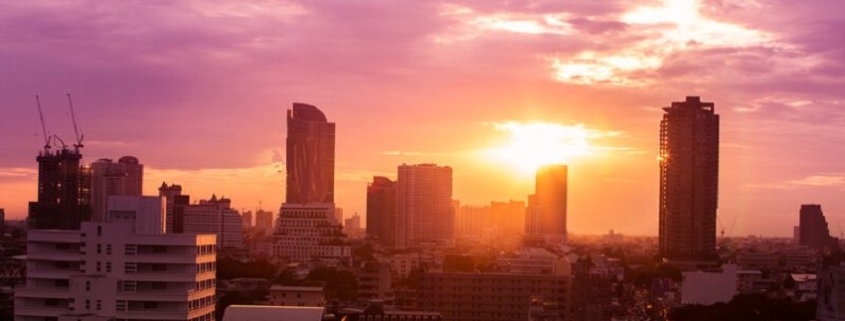Fort Worth’s Near Southside Primed To Become Innovative Economic Force
Earlier this year, Fort Worth leaders had plans for a first-of-its-kind medical innovation district south of downtown, an ambitious undertaking that could attract medical-related enterprises to the city and potentially could become an innovation hub.
A new JLL report shows just how much Near Southside has grown over the years—with the potential to become a major medical hub. The city’s plan would connect existing medical institutions and organizations with startups and business incubators with hopes to attract thousands of additional healthcare and technology-related jobs to the area, according to JLL’s report.
Near Southside is already home to major healthcare centers such as Cook Children’s Healthcare System, Texas Health Harris Methodist, Baylor Scott & White, and Medical City Fort Worth.

The 1,400-acre area known as the Medical Innovation District called Near Southside (PHOTO CREDIT: Fort Worth Economic Development Department)
In the report, JLL examines the history and future of the 1,400-acre area called Near Southside. JLL refers to the Fort Worth district as “an emerging mixed-use district” where some of the city’s newest retail, office, and multifamily housing projects are located. The area has roughly 30,000 people employed within its boundaries, making it the second largest employment center in Tarrant County outside of downtown Fort Worth.
INTERACTIVE MAP: JLL map shows the growth from 2007 to 2019 in the Near Southside
The Near Southside area was first developed in the early 1900s in the area north of the Fairmont residential neighborhood. A nonprofit, member-funded organization called Near Southside Inc. was formed in 1995 to look after the area’s development. The nonprofit also manages Tax Increment Financing (TIF) District No. 4, which was created in 1997 to help with revitalization efforts.
In the ensuing years, Near Southside has seen major economic growth. The district’s taxable value was $229.7 million in 1997 and $729.3 million in 2017, according to JLL. Near Southside is projected to have increased its base value by just over 350 percent to over $1 billion by fiscal year 2024.
Improved Infrastructure And Housing Growth
Infrastructure in the area has been improved with the 2014 retrofit of West Rosedale Street from a six-lane road to a four-lane street with bike lanes, on-street parking, and pedestrian improvements. An $8.5 million reconstruction of South Main Street also happened last year.
The Hemphill-Lamar Connector, a $53 million tunnel under Interstate 30 with rail lines providing another downtown route, is scheduled to open in 2020.
Housing in the area has also seen growth in recent years with roughly 2,000 multifamily units having been built since 2000 and three more currently under construction. On top of this, an additional 300 units have been proposed, including a 10-story mixed-use project.
A proposed 2.1-mile extension of TEXRail southwest would add a new station to serve the major hospitals in Near Southside. Those hospitals provide a major economic and employment base for the area, according to JLL.
According to a 2014 study by the University of North Texas, the healthcare facilities in Near Southside have an annual economic impact of $4.2 billion for the city of Fort Worth and $5.5 billion throughout Tarrant County.
Robert Sturns, the economic development director for the city of Fort Worth, told Dallas Innovates earlier this year that the hope is Near Southside would “become the most livable medical district in the U.S.”
Creating a medical innovation district in Near Southside was a key finding from the Economic Development Plan accepted by the City Council at the end of 2017. The plan’s goal is to compete successfully on the national and international stage for “creative, high-growth businesses and the talented individuals who fuel them.”
The University of Texas at Arlington’s Center for Transportation, Equity, Decisions and Dollars was contracted to study the district’s needs and strengths, and Schaefer Advertising is expected to develop messaging and a brand for Near Southside Inc.
Near Southside has been a focus of innovative thinking in placemaking for years. The Brookings Institute’s global urbanization specialist Bruce Katz noted in 2016 that the area was “one of the most eclectic micro-economies I’ve ever encountered,” featuring everything from cultural and fine arts to hospitals and beer and whiskey manufacturing.
Source: Dallas Innovates


